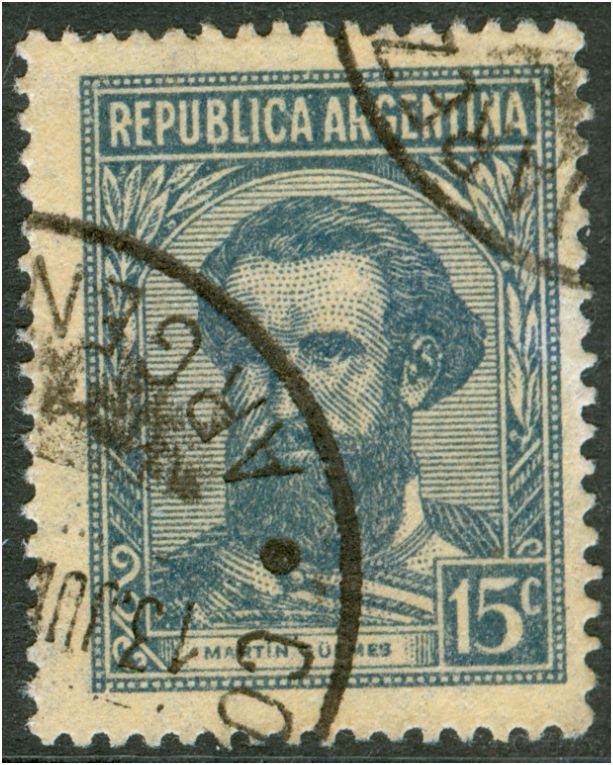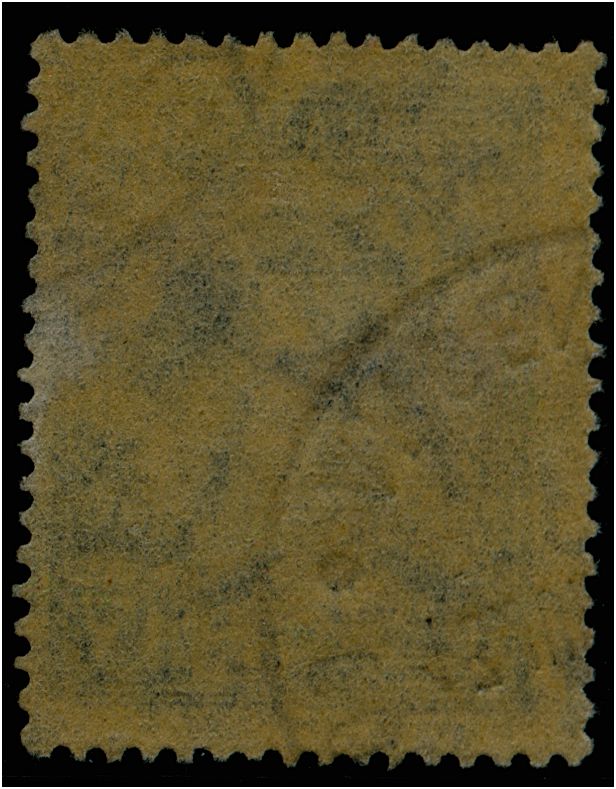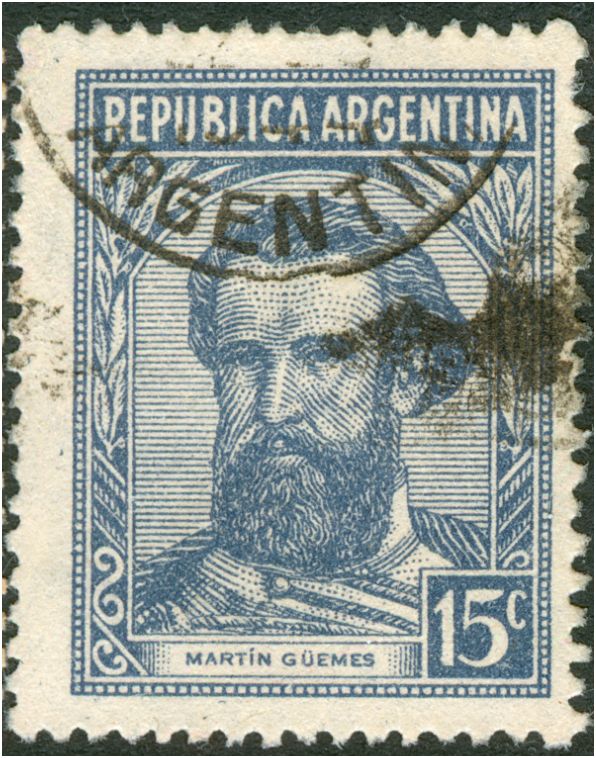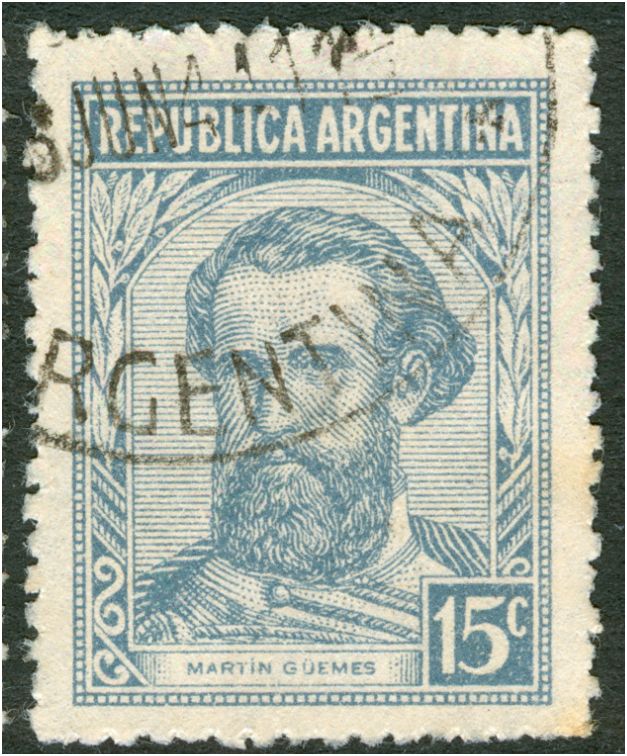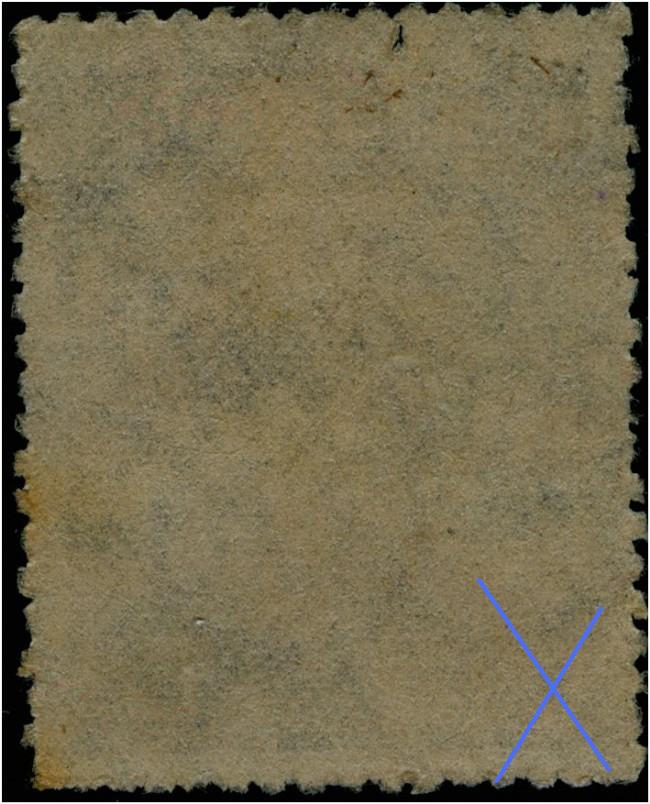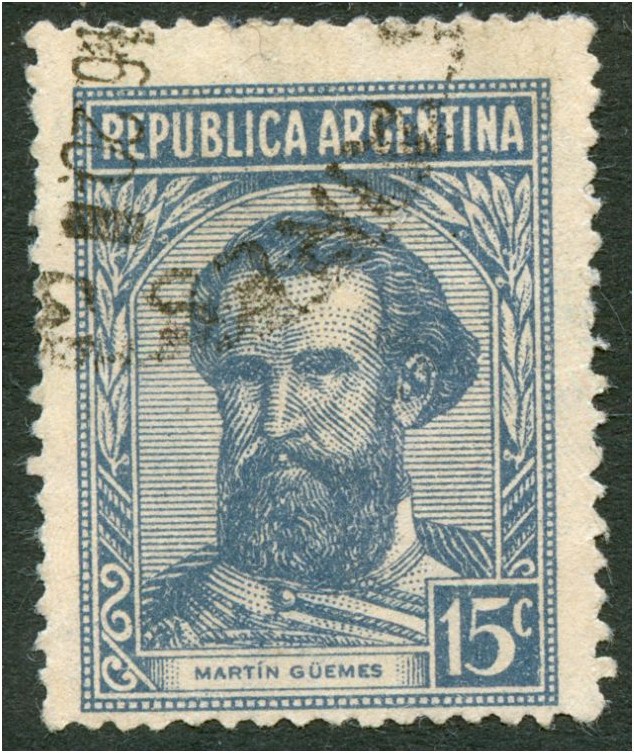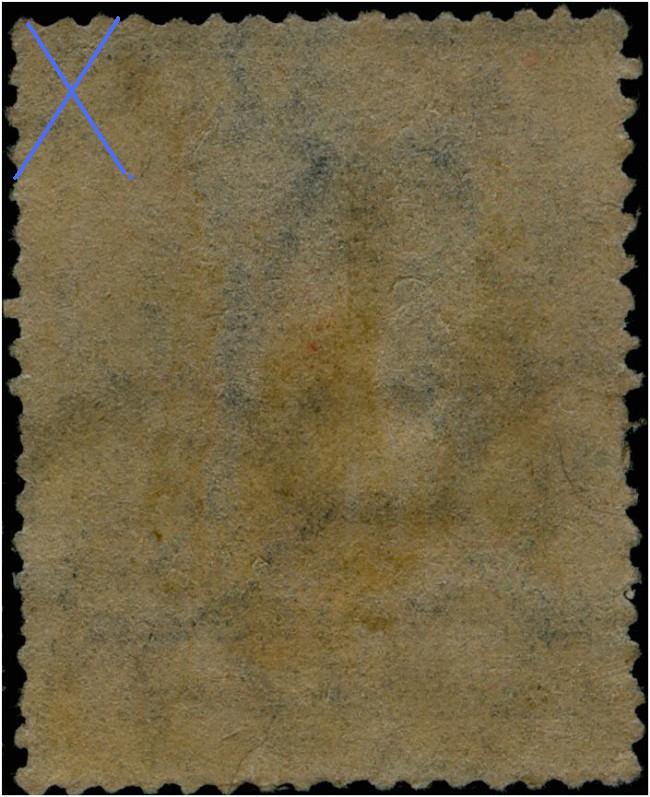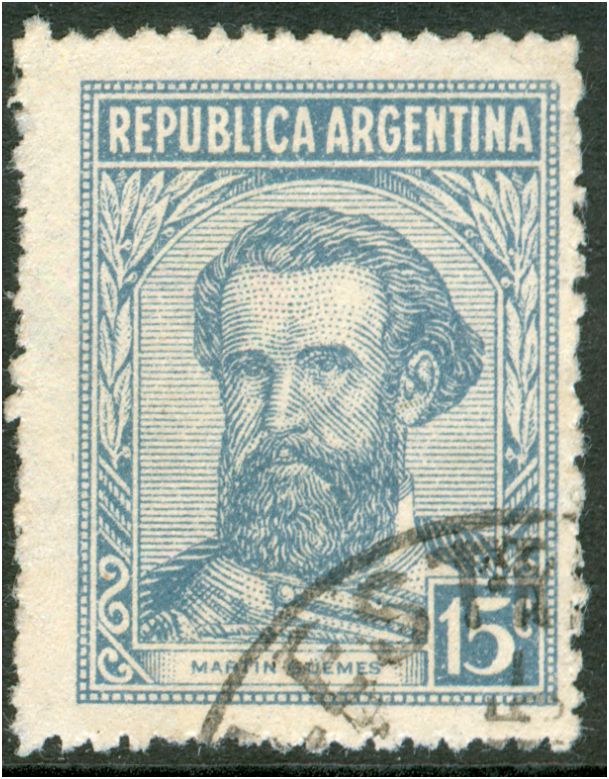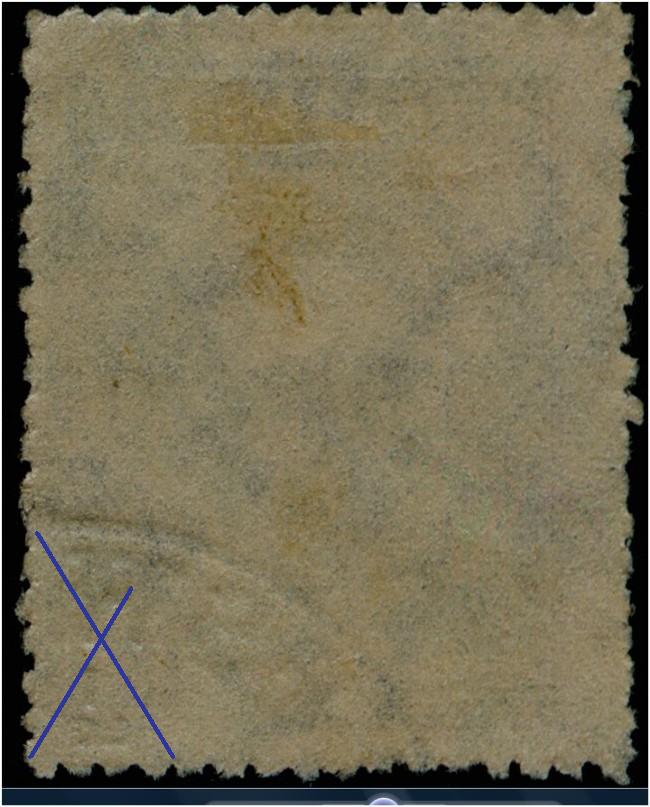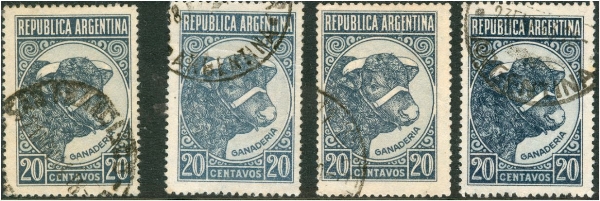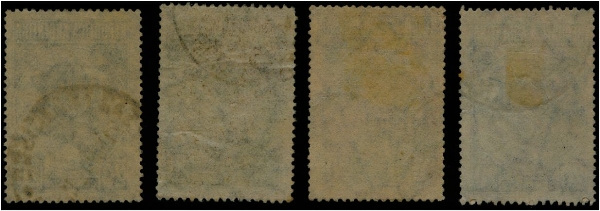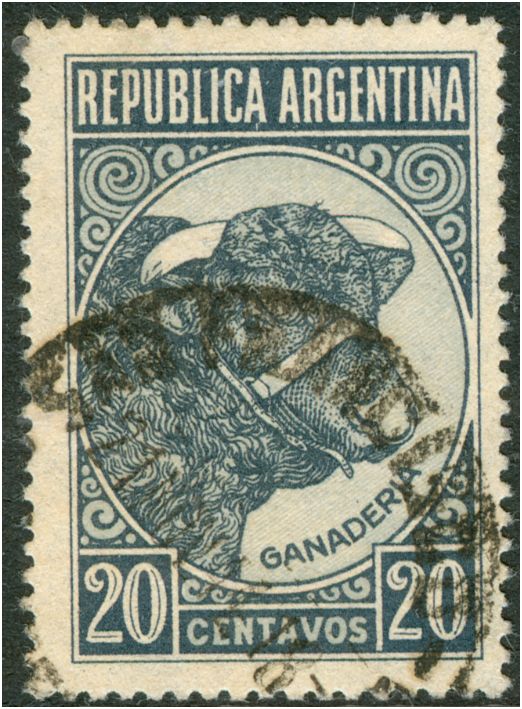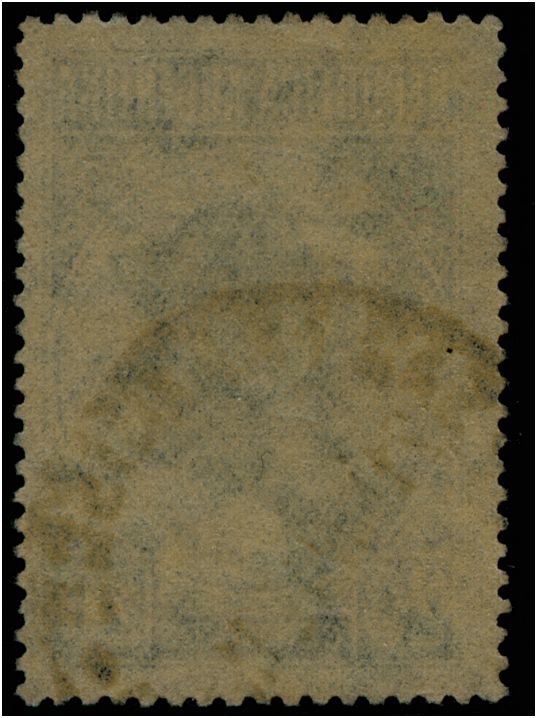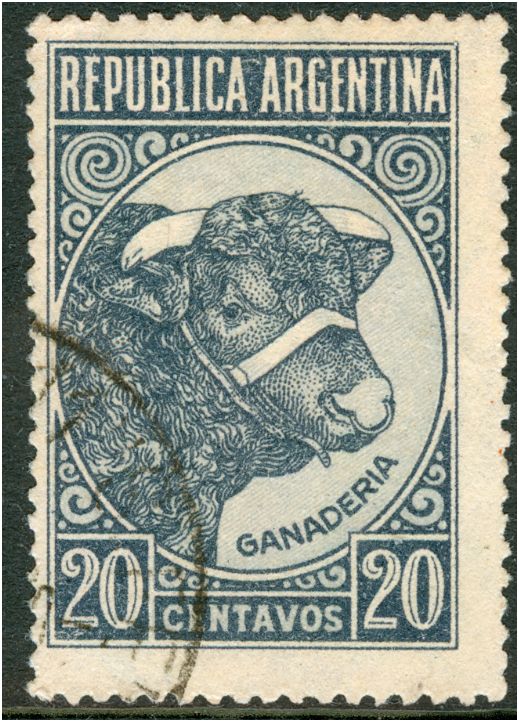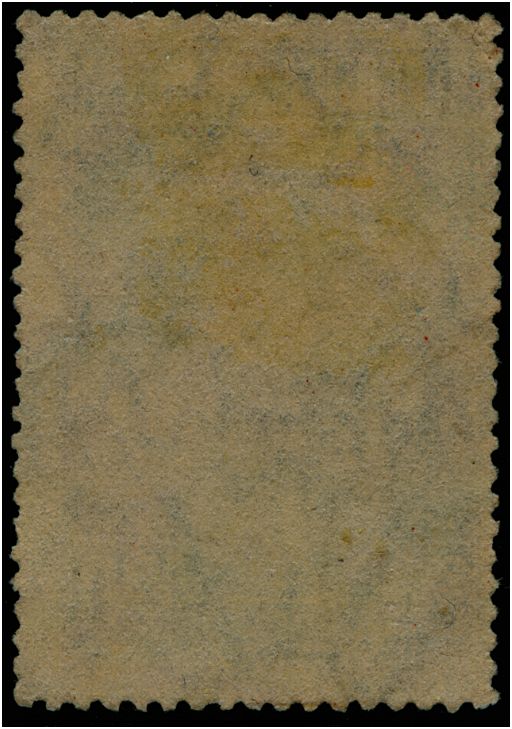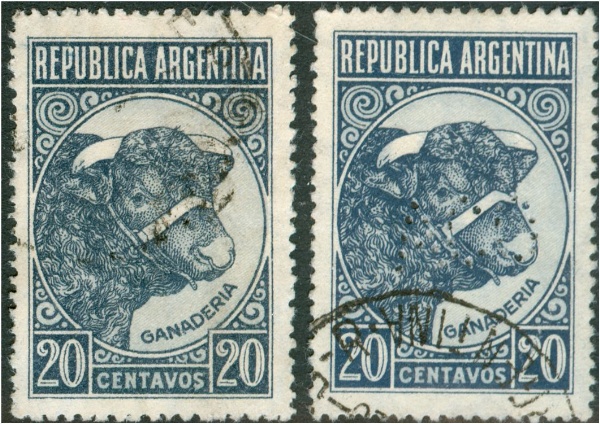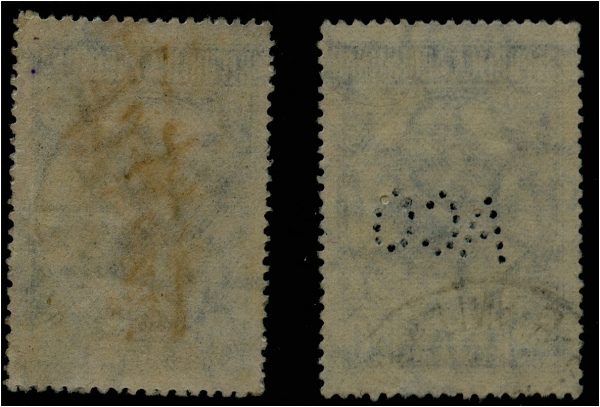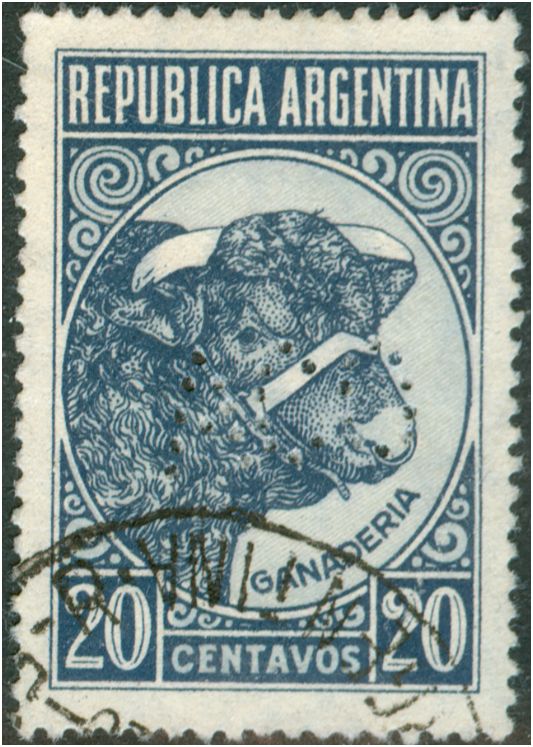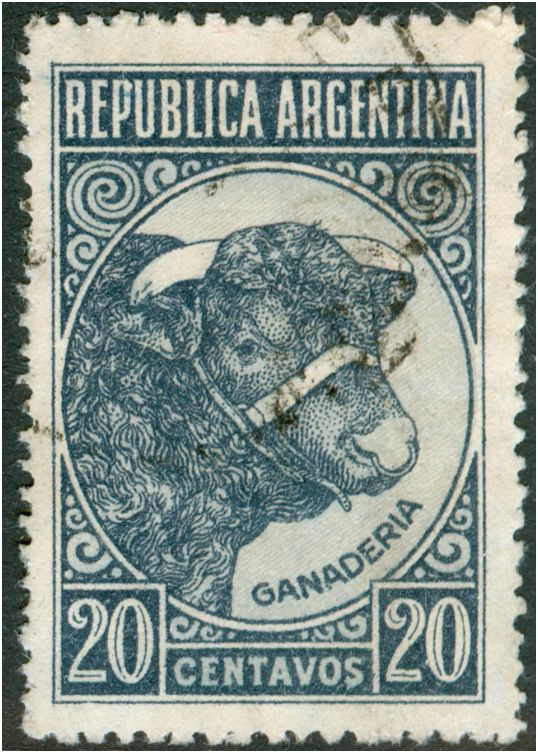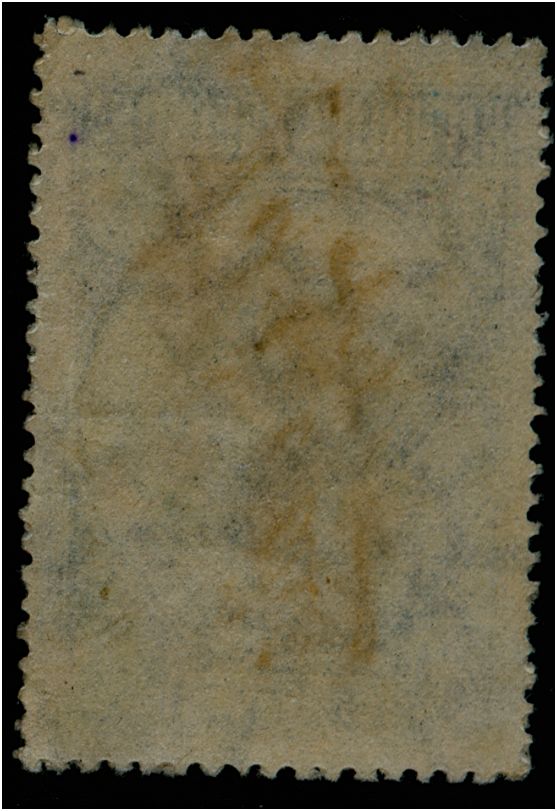Página 3 de 5
Re: P&R I Classification
Publicado: 23 May 2010 09:20
por Rein
Re: P&R I Classification
Publicado: 23 May 2010 09:26
por Rein
The 20c Toro grande in grey-blue will give us some problems!
The orthogonal watermarks in the case of the 20c Toro occur in 3 places in this part of the table. Both Granulado vertical [MI 3], RR difuso [RR 1] and RR nitido [RR 2] have "m" in the Bardi catalogue - that is the line of AЯ will be parallel to the short side of the stamp (D.A. Bardi's notation!). What are the differences that we can recognize????
A conditio sine qua non for the Difuso version is the symmetrical paper wire! But the Granulado vertical has that also!
Let's scan the consecutive stamps and look at potential differences!
Difuso:
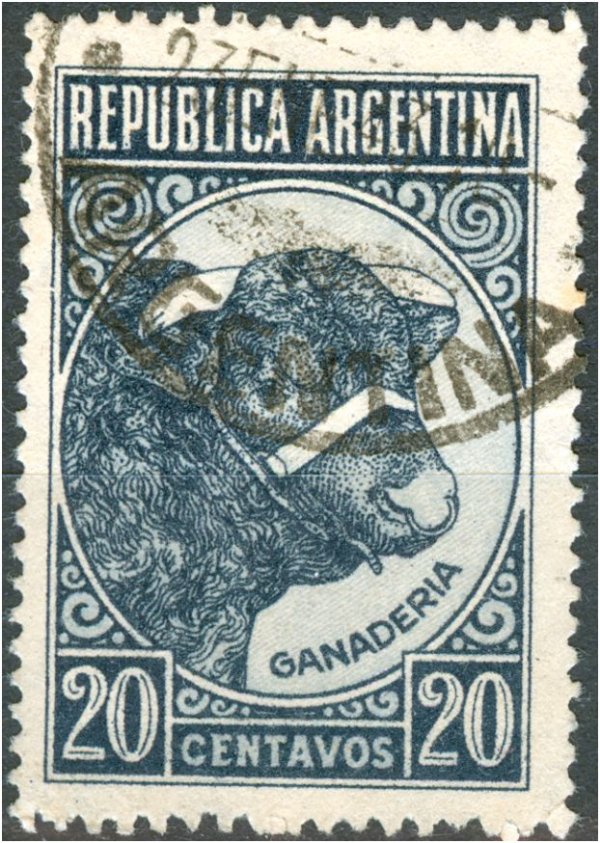
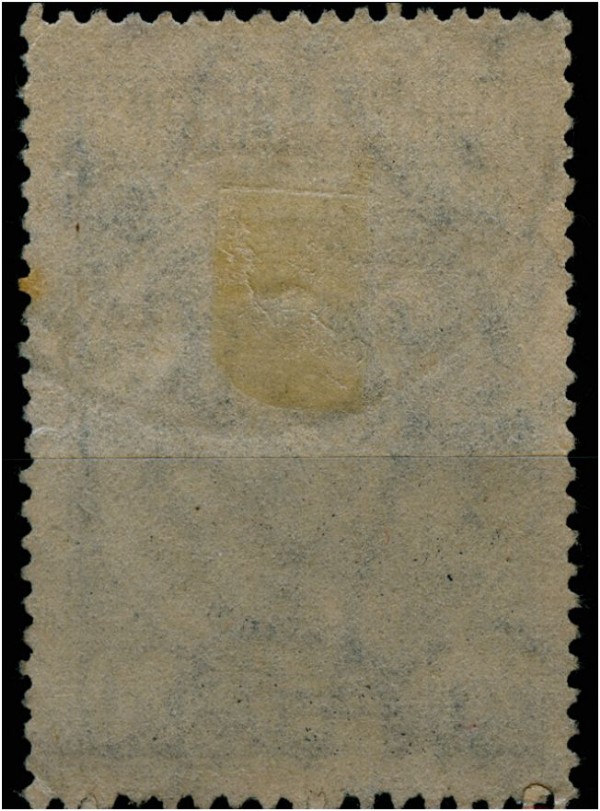
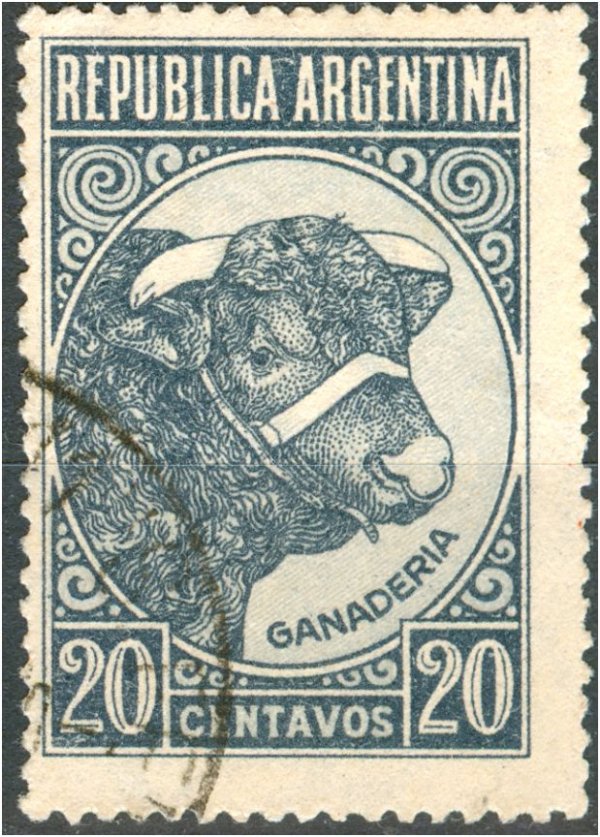

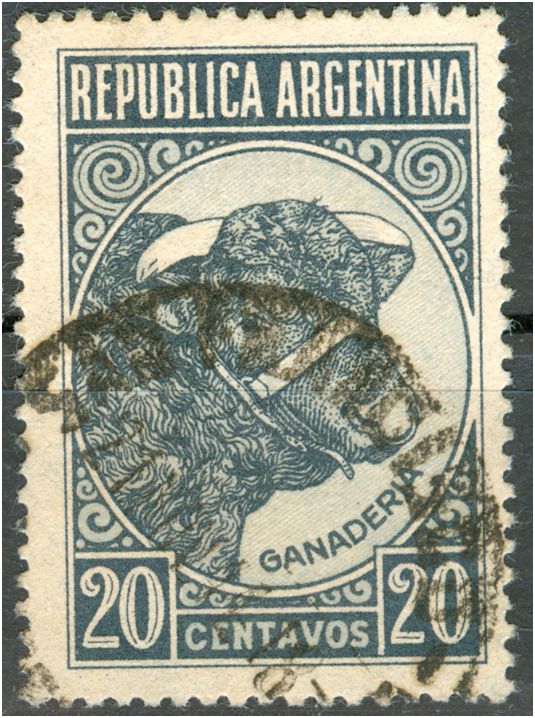
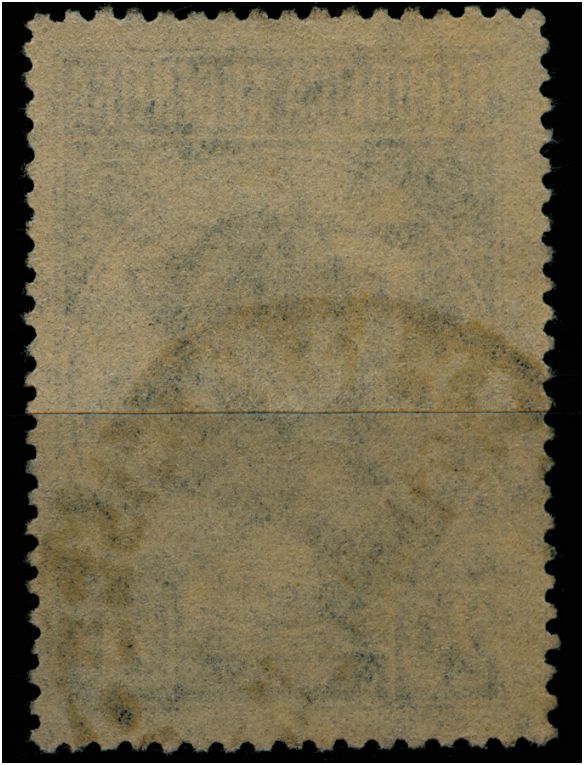
Re: P&R I Classification
Publicado: 23 May 2010 10:33
por Rein
35c Post Office /Telegrafos
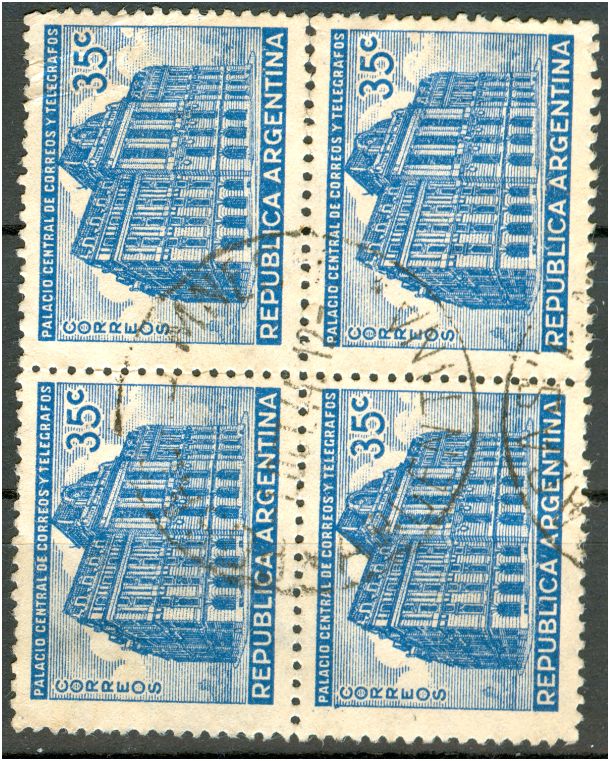
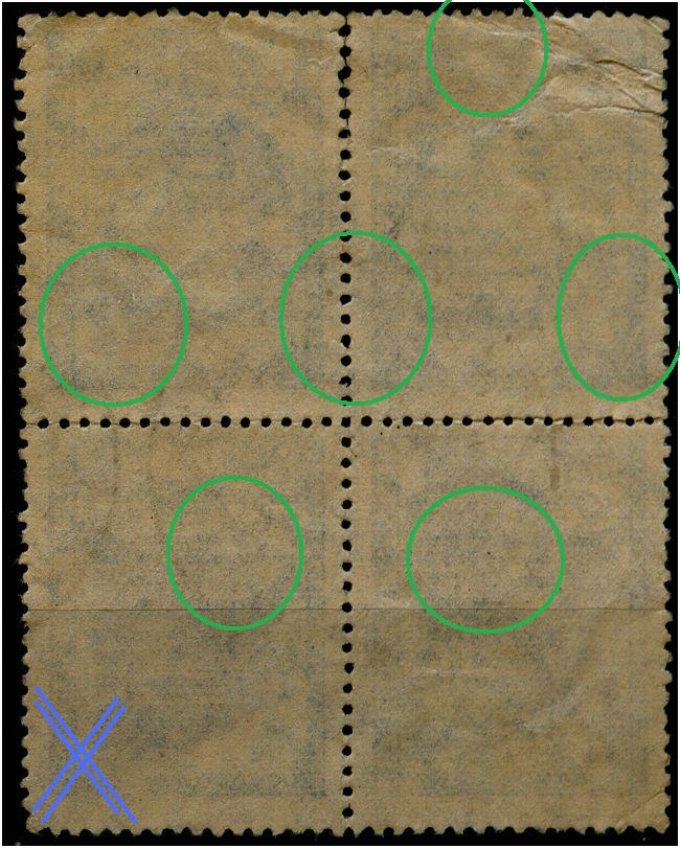 rc2295
rc2295
Re: P&R I Classification
Publicado: 23 May 2010 10:59
por Rein
Rein escribió:José Merlo in his 2008 publication (Revista 2250 on the paper nr 13

first states that the number 27 had been used for reel-fed typography and the nrs 13 and 29 for sheet-fed offset-litho.
Knowing the counter sheet sizes of either 20x10 [small and medium size] or 10x10 [larger size] and 5x10 [larger size Airmail] it is strange to read about (printing) sheets of 400 (no 29) or 200 (no 13)!

The reels of nr 27 had a width of 28cm! Cut off in loose sheets with a height of 50cm which is much higher that necessary and the found height of the top margins [5-10mm] does suggest.

10x26.0= 26cm will allow not even a full width stamp for both left and right margins, 10x37.5=37,5cm will leave 12.5cm ≈ 3.5 stamp for top and bottom margin .
Both no 13 AND 27 have an orthogonal watermark! What is the printing sheet size of no 13???? 56x50cm - not likely to have 28x100!
And no 29??? 50x70cm??? Double sheet for the medium sized PyR I ????
To make it even more complicated!
Have look at the complete sheet of the typographed ministerial in Göttig-Jalil on page 409!
Calculating the size of the sheet [75% reduction in the catalogue] we get 25x28cm! Was the sheet size for no 27 50x28cm instead of 28x50cm??? And could we have had a double width reel of the typography stamps!?!?!?
It is about time to come up with the known or observed facts as to the sizes of the counter sheets and the printing sheets and how the counter sheets are positioned within a printing sheet!
to be continued ....
rc2263
Thanks to José Merlo, we now know that the numbers used by the Casa de Moneda do NOT refer to a particular type of paper or watermark, BUT to the sizes used in the Printing Works for the printing sheets [pliegos]:
Nº 13 Sheet of 55 x 68 cm (pliego for 2 panes of 200 stamps per sheet) (1/2 to 20c value)
Nº 27 Reel of 28 cm width
Nª 28 Reel of 23 cm width
Nª 29 Sheet of 58 x 80 cm (big enough to print 4 sheets of 100 stamps each of large values [25c to 20p]
The drawings I had made of the counter sheets can now be made more precisely!
Re: P&R I Classification
Publicado: 23 May 2010 11:13
por Rein
To make it even more complicated!
Have look at the complete sheet of the typographed ministerial in Göttig-Jalil on page 409!
Calculating the size of the sheet [75% reduction in the catalogue] we get 25x28cm! Was the sheet size for no 27 50x28cm instead of 28x50cm??? And could we have had a double width reel of the typography stamps!?!?!?
The reels for the JSM in typography will probably go with the reel width of 23cm [11x21.0=23.1] although 28cm would give much wider side margins.... Sizes 28 or 27 - typically for reels of typography.

for the reel-fed typography stamps of the PyR I - 1c, 5c, 10c red and chestnut-brown, 20c Torito...
Re: P&R I Classification
Publicado: 23 May 2010 11:18
por Rein
Rein escribió:The parallel watermarks always have the direction of paper parallel to the long side of the stamp with TWO exceptions:
MI 1 of the 25c and the 2pesos!
How is this possible??????
In the mid-1930ies we have 3 types of stamp sizes:
- the small sized JSM stamps
- the medium sized PyR I stamps
- the larger sized PyR I stamps
I will not take into account the Airmail stamps for the time being!

Two sheets have the same size, the other is similar but different!
We can expect rthe 25c and 2pesos stamps to have been printed on the paper of the medium sized stamps. Not by mistake, in the sense that a sheet got accidentally misplaced, but used for a particular printing!

For the PyR I with the paralell watermarks [Ingles] the following scheme probably will do:

The higher values, larger sized printed in sheets of 400 = 2x2x10x10!
No 13 = 55 wide x 68 high = (1x2) • (22x11) = (1x2) • (528x335) = 52,8x67,0cm, so the left/right margins are a
bit wider than 1/2 stamp, the top/bottom margins are a bit higher that 1/2 stamp!
The lower values, medium sized printed in sheets of 400 = 2x20x10!
No 29 = 58 wide x 80 high => (2x2) • (11x11) = (2x2) • (286x412,5) = 57,2x82,5cm, so the left/right margins are
a bit wider than 1/2 stamp, the top/bottom margins are a bit lower that 1/2 stamp!
rc2298
Re: P&R I Classification
Publicado: 23 May 2010 11:30
por Rein
Rein escribió:The parallel watermarks always have the direction of paper parallel to the long side of the stamp with TWO exceptions:
MI 1 of the 25c and the 2pesos!
How is this possible??????
Two sheets have the same size, the other is similar but different!
We can expect the 25c and 2pesos stamps to have been printed on the paper of the medium sized stamps. Not by mistake, in the sense that a sheet got accidentally misplaced, but used for a particular printing!

The counter sheet size of the medium sizes is OK, but then we may expect wide margins AND only 2 counter sheets of 10x10 of completely DIFFERENT offset-litho plates!!!!
Re: P&R I Classification
Publicado: 27 May 2010 05:09
por Rein
The Austriaco is giving us some more problems:

For most of the PyR - only the larger sized ! - the direction of paper is parallel to the SHORT side of the stamp; only in 2 cases the direction has turned 90 degrees - for the 25c Labrador and the 50c Petroleo! This can NOT be explained by turning a rectangular sheet as it could in case of a square one!?
Austrian paper had been used before - indeed with the same orientation! - but with slightly different characteristiscs of the watermark design.

In 1930-1935 ALL papers seem to belong to the same lay-out - the Airmail excepted as their sheet size was 5x10:

Re: P&R I Classification
Publicado: 27 May 2010 05:20
por Rein
As mentioned in José Merlo's article - see clipping above - the commemoratives were not supposed to have had any Austriaco.
at least not the type we happened to know in 1937-1939 !
Ther Airmail stamp however did have the Austriaco only with the paper transposed:
viewtopic.php?f=137&t=4051
and - to a big suprise for most philatelists - the 1939 Housing stamp had an Austriaco!
viewtopic.php?f=137&t=3794
rc2315
Re: P&R I Classification
Publicado: 27 May 2010 05:24
por Rein
Otin escribió:Rein,
Undobtedly it is papel austríaco! A few weeks ago a memebr of my club told me a stamp unknown to be printed on such paper appeared. Upon your mail I called him to confirm what stamp it was and he confirmed it was the Housing stamp.
This is a fascinating aspect of philately: it always surprises you with a new challenge. But what is strange for me is the contemporarity of this dicovery, unless you knew of it existence from long ago.
Do not be surprised if Kneitschel or Klass didn't mention these papers. It happens that JG fineally accepted our 'preaching'
of the importance of classifying different papers. I wrote my PyR I monography because I was tired of seeing collectors being
cheated by dealers that sold them the common papers by the good ones, and to point out the existence of real rarities concerning papers. Saludos
José
Sometimes a discovery is just floating in the air! I did have that Housing stamp for some time now - 6 months??? Remember that I only started collecting Argentina in March 2009!

Re: P&R I Classification
Publicado: 27 May 2010 13:39
por Rein
The concordance
Rubiera = Bardi
1E1 = MI 1 ! => MI 1a
1E2 = MI 2
1E3a = MI 1 ! => MI 1b
1E3b = MI 5 ! => MI 5a
1E3c = MI 4
1E4 = MI 3 and MI 7 (how the differentiate Mate Lustroso???]
2D = RR 1
2C = RR 2
NGR = SF 1 / SF 2 (Bardi had no way of denoting the direction of paper! SF 1 = SF 2!)
NOP = SF 3
CL1A = TI 1
CL1B = TI 2
CL2A = TI 3
.............
CL2B = TI 6
The Clay types of Tony do not quite match the TIZADO's of Dario. Tony has no TI 4 and TI 5. I think Dario is on the right track but will have some trouble to make it clear....
1L1 = MI 5 ! => MI 5b
1L2 = MI 6
1L3
1L4
1L5 = ZA 1
1L6 = ZA 2
ZA 3 and ZA 4 are beyond Tony's reach so far....
Otin » 27.05.2010 escribió:
Tony, Perdón por la tardanza en contestar. No hay ninguna dificultad en clasificar el 1/2 c Belgrano con RR. Con esta filigrana se emitió solamente en la versión difusa y si Ud revisa sus ejemplars, aquéllos que tengan la filigrana parada (upriight), o sea
que la RA esté paralela al lado menor, no son otros que rayos rectos y ésto es terminante. No hay excepciones.
.......................................
Cuando Ud. vea mi clasificación verá que nos podemos poner de acuerdo como ya existe en Argentina. Saludos
Merlo
.......
Tony and José,
I think that the Bardi classification - with a slight modification - will be as good as we will get for the time being! The consensus in Argentina as suggested will refer to Bardi's classification I suppose!
Re: P&R I Classification
Publicado: 30 May 2010 14:07
por rubiera
I am ok with that. I think Bardi has done some really good work here and has already publicized it in Argentia via his book.
tony
Re: P&R I Classification
Publicado: 31 May 2010 10:52
por Rein
rubiera » 31.05.2010 escribió:
Re: Todo lo relacionado con el 20c. Toro grande P y R I
Volviendo al tema de cuales son los papeles que existen, encuentro que los datos en la tabla de Bardi son los correctos:
1942 1E3
1942 (a finales de) 2D RR difusos, colores palidos. Se puede confundir con el Holandes (1E4) pero este ultimo yo opino que no existe.
1945 NGR sin filigrana
1949 2C RR nitidos, colores unicos
1951 1L1 rayado horizontal, colores muy oscuros
saludos
tony
So the 20c Toro grande on Holandés does NOT exist!
Re: P&R I Classification
Publicado: 31 May 2010 11:33
por Rein
Re: P&R I Classification
Publicado: 31 May 2010 11:54
por Rein
